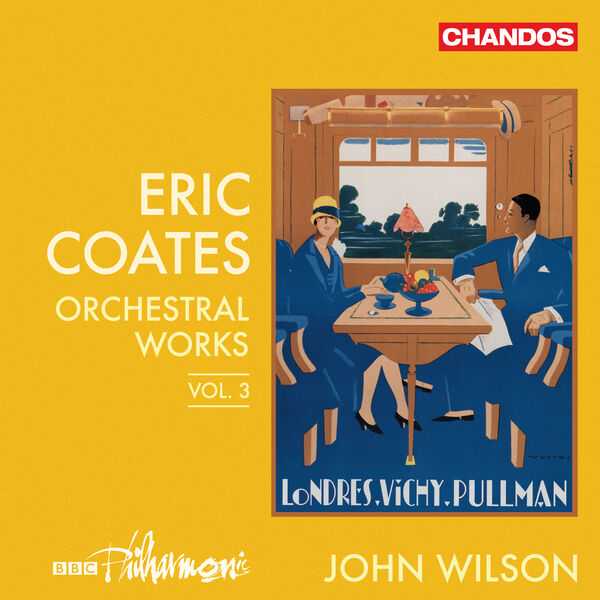

Composer: Eric Coates
Orchestra: BBC Philharmonic Orchestra
Conductor: John Wilson
Format: FLAC (tracks)
Label: Chandos
Catalogue: CHAN20164
Release: 2023
Size: 1.16 GB
Recovery: +3%
Scan: yes
01. Television March
Three Men Suite
02. I. The Man from the Country
03. II. The Man about Town
04. III. The Man from the Sea
Cinderella
05. 1. Cinderella, alone by the fire, dreaming
06. 2. Her Fairy Godmother calls her softly and she gradually wakes
07. 3. Cinderella dresses for the ball
08. 4. Cinderella arrives at the Palace
09. 5. The Prince and Cindella dance together
10. 6. The Clock strikes Twelve
11. 7. Cinderella, once more sitting by the fireside
12. 8. She fancies she hears her Fairy Godmother calling her again
13. 9. The Prince’s Trumpeters are heard in the distance
14. 10. The Prince and his attendants arrive at Cinderella’s house
15. 11. The Slipper fits
16. Dam Busters March
17. Last Love – Romance
18. Sweet Seventeen – Concert Valse
The Three Elizabeths Suite
19. I. Halcyon Days (Elizabeth Tudor)
20. II. Springtime in Angus (Elizabeth of Glamis)
21. III. March. Youth of Britain (The Princess Elizabeth)
John Wilson’s third volume of the music of Eric Coates combines some of the composer’s larger-scale works with miniatures and two marches. The Cinderella Phantasy frames the well-known fairy-tale from Cinderella’s perspective, glossing over the more brutal elements of the original, with some notably descriptive writing for the dream sequences, the ball and of course the happy ending. The Three Men is to some extent autobiographical, as Coates explores his love of his native Nottinghamshire countryside, his love for London and his love of the sea. The Three Elizabeths is a suite of portraits of three great figures in English History – Queen Elizabeth I; Elizabeth of Glamis (then the Queen Consort, now remembered as the Queen Mother), and Princess Elizabeth (who of course became Queen Elizabeth II). Lost Love is a wistful Romance written in 1939, while the much later Sweet Seventeen is a beautiful waltz, inspired by Eric and his wife Phyliss? love of dancing. In fact, the title refers to his first date with Phyllis, at the Blenheim Restaurant, the day before her seventeenth birthday. Two marches complete the programme – the Television March was commissioned by the BBC (just three weeks before the date of broadcast!) for the resumption of television broadcasting in 1946. The Dam Busters March was used as the main title for Michael Anderson?s 1955 film and is arguably the composer’s most widely known work.
It is indeed satisfying to see the music of Eric Coates on classical best-seller charts, where this one landed in the late spring of 2023. For so many decades, Coates was neglected, but championing by the conductor John Wilson, here with the BBC Philharmonic in fine form, has begun to change the situation. One thing that distinguishes Coates from most of his fellow composers of light music is that he undertook compositions in larger forms, and this album includes several splendid examples. Much of it is given over to Cinderella in 11 concise but hugely evocative sections illustrating episodes in the famous tale. Consider “The Clock Strikes Twelve,” with not bells but timpani strokes. Coates’ abilities as a musical portraitist are in evidence not once but twice, with the broad types of The Three Men (“The Man from the Country,” “The Man About Town,” and “The Man from the Sea,” a riot of chantey-like music), and then at the end with The Three Elizabeths (“Queen Elizabeth I,” “Elizabeth of Glamis,” and, in 1944, “Princess Elizabeth”). There are also short pieces including, to raise the curtain, The Television March. There is not a dull moment on the album, and the next step for this delightful music would be its inclusion in a broad range of symphonic programs.



